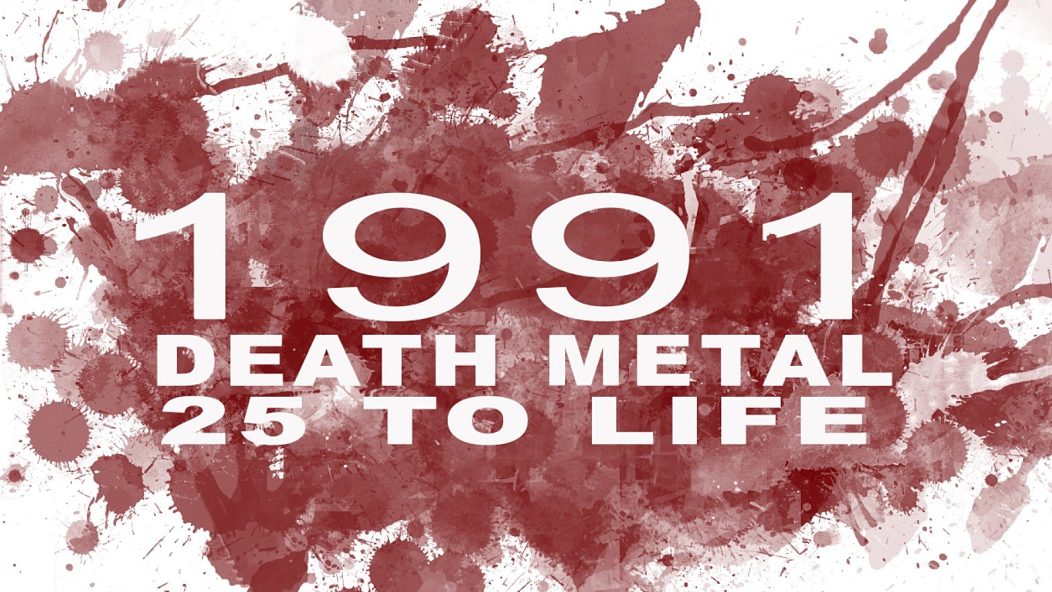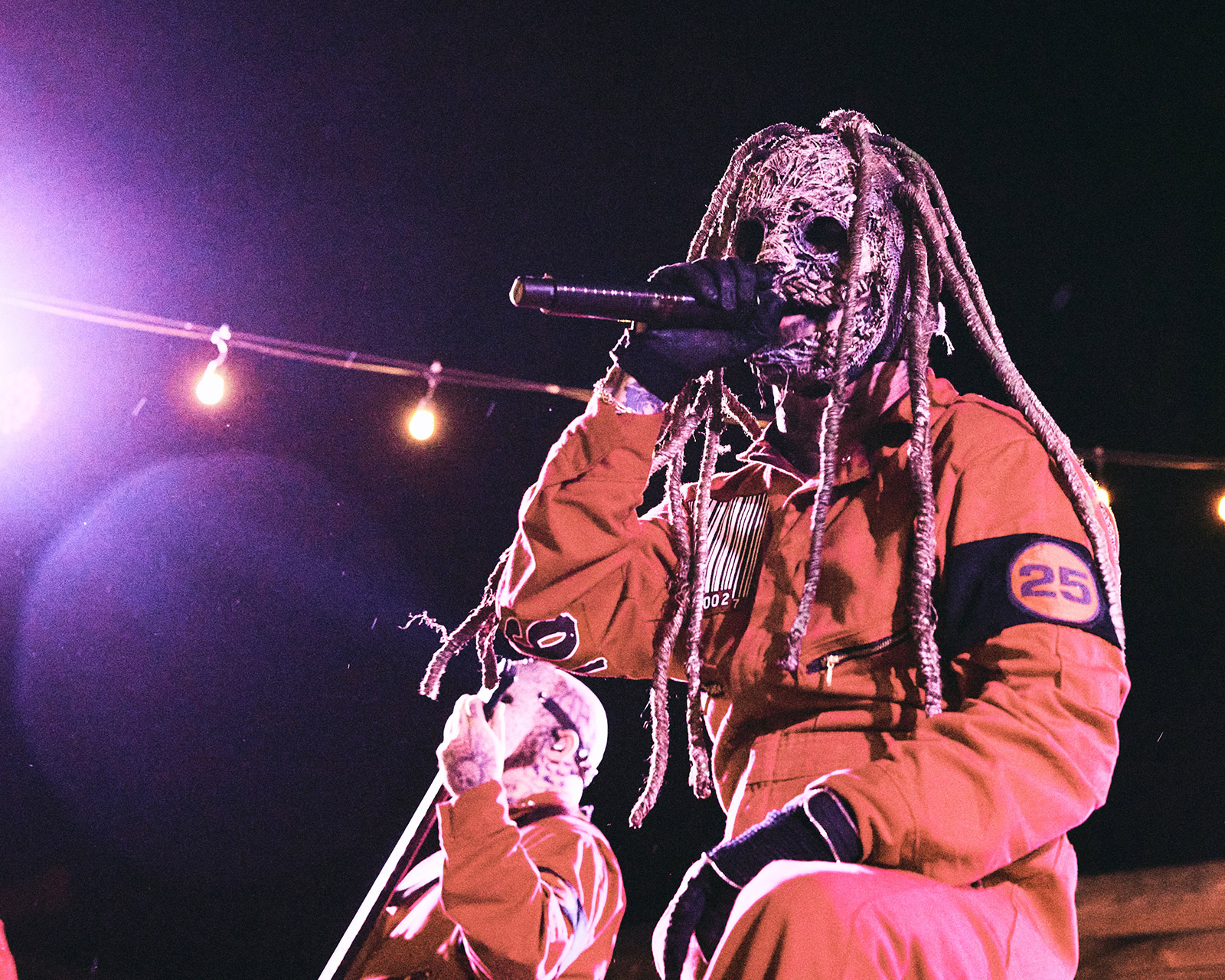
Death Metal 25 to Life: July - October 1991

…
Day three of Death Metal 25 to Life starts now. Today’s platter of splatter sees both New York and Canada entering the picture, each contributing their own spin on the deathly arts. Oh yes, and more Swedes. Always more Swedes. This won’t be last you’ll hear of ‘em.
–Greg Majewski
…

…
Immolation – Dawn of Possession (July 19th)
There was definitely a Swedish sound and Florida packed its own tropes as well. But New York? I have a tough time finding a unifying sound to attribute to that state’s first class of death metal outfits. Maybe that’s a good thing. The Empire State’s innovators each packed their own unique sounds: Suffocation’s brutal precision, Cannibal Corpse’s (then) toilet-bowl vocals and obsession with carnage.
And Immolation? Robert Vigna’s lead tone. As much a clinic in dissonant harmonic composition as an album, Dawn of Possession defines much of the tonal vocabulary that extreme metal employs. Sure, Vigna could groove – see the end of “No Forgiveness (Without Bloodshed)” – but he could also push a song into high gear with an elongated stream of pinched harmonics that sliced through the remainder of Immolation’s din easily. Trey Azagthoth was showing off in the same way earlier, but Vigna put death metal lead guitar front-and-center in a way that doesn’t scan as showing off for the sake of ego or attention.
The remainder of the band performs at a similar level of acumen. Craig Smilowski’s drum fills (dig that tom sound) follow the guitar in a way that seems reminiscent of Dale Crover at times (the intro to “After my Prayers”, for example). Tom Wilkinson held the second guitar position down in a way that let the rest of the band go wild. Ross Dolan’s bass never took center stage, but his cemetery vomit vocals and blasphemous poetry laid the groundwork for today’s de rigueur blackened death metal.
–Joseph Schafer
…
…

…
Grave – Into the Grave (August 10th)
Let’s say some hypothetical not-very-money-minded show promoter were to put together a “big 4 of Swedish Death Metal” show, not unlike the “Big 4” thrash show. Grave would open. As it turns out someone got three of the four – Grave played first, natch. They’re the Anthrax to Entombed’s Metallica: not quite so historic, but different and quirky in their own way, and what they lack in hits they make up for in sheer work ethic. Said quirk? Grave never used the HM-2 pedal, but unlike Unleashed, they still tried to aim close to the Sunlight Sound buzzsaw. The difference is subtle, but listen to Clandestine, then Like an Everflowing Stream and then Into the Grave and the difference is audible: a little less punch and more quiet bass in exchange for some guitar clarity. Percussive and clicky, Grave kept their songs more straightforward than Entombed, light years away from the soggy bottoms of their Florida contemporaries. The band wear it well, though maybe it takes them until side B to really condense their strengths: the queasy groove intro to “Haunted” is probably the best moment on the record.
–Joseph Schafer
…
…

…
Atheist – Unquestionable Presence (August 30th)
’91 was the year death metal discovered jazz. Two years before Cynic would blow minds and send caveman longhairs in a tizzy with Focus, fellow Floridians Atheist embraced the harmonic complexity and odd meters of America’s first purely original contribution to music. But there are plenty of albums on this list and in the few years preceding that experimented with effed-up harmony (Morbid Angel) and time signatures (Immolation). What sets Unquestionable Presence apart from its contemporaries is its joyful sense of improvisation, that feeling of “We can go anywhere and do anything” that seemingly dawned on Atheist as they were recording. From the shuffling drum patterns and screaming solo on “Mother Man” to the bossa nova bass breakdown on “An Incarnation’s Dream” to the thrash 2.0 of closer “And the Psychic Saw,” Unquestionable Presence is as addictively fun a listen as one would expect from the only death metal band comfortable enough in its own skin to feature a smiley face cut-off in its press photo. Special note to bassist Tony Choy, who worked through the musical calculus Roger Patterson left behind after being killed in a van accident on tour.
–Greg Majewski
…
…

…
Cannibal Corpse – Butchered at Birth (September 30th)
The Cannibal Corpse of 1991 barely resembles the one we know today; bassist Alex Webster and drummer Paul Mazurkiewicz are the only remaining alumni from their second album Butchered at Birth, but the image that this album evokes is startlingly close to the one in my head when I think of the band. In spite of the razor thin, squelching guitars and the obnoxious popping snare drum, Butchered at Birth is where Cannibal Corpse found their sound. Chris Barnes gave the best vocal performance of his career here, growling with power and force rather than conjuring the gurgling mess that now fronts Six Feet Under. Even if the engineering and production left something to be desired, Cannibal Corpse were firing on all cylinders here. Mazurkiewicz’s snare pistons go off with factory-like precision in “Under the Rotted Flesh” and “Innards Decay” while Jack Owen and Bob Rusay’s hands fly about the fretboard.
Cannibal Corpse have existed in their own bubble as artists. Like Iron Maiden, they’re a staple of their genre and have an endless supply of awful imitators. But also like Maiden, Cannibal Corpse’s identity is established by the sum of its parts. Mazurkiewicz’s relentlessness is the obvious factor, but the perfectly controlled chaos heard at the halfway points of “Rancid Amputation” and “Covered With Sores” are made up of every member doing their part. Owen and Rusay’s spastic fretwork informs it as much as Webster’s labyrinthine bass lines. It’s a sound that modern day Cannibal Corpse has inherited with ease–one that pleases crowds night after night, album after album–but it was first established here on Butchered at Birth
–Avinash Mittur
…
…

…
Pestilence – Testimony of Ancients (October 6th)
Testimony of the Ancients’ tracklist isone of the most mystifying in death metal history. After kicking Martin Van Drunen to the curb before breakout Consuming Impulse, Patrick Mameli and his crew began the journey towards enlightenment other bands of their vintage were undertaking, joining Death and Atheist on the Righteous Prog Path. Pestilence chose to show this willingness to stretch the boundaries of modern death metal with interludes after each song proper. Thus, 16 tracks; only half of which contain real, heavy metal. But damn, between the buzzing mosquito sound bites and back-masked vocal weirdness of the short stopgaps, Pestilence wrote some of the most indelible songs of their era. For his part, Mameli flexes stupendous soloing chops on “Prophetic Revelations” and the psychedelic excursions on “Twisted Truth,” his notes winding around each other like DNA double helixes. And how can we not mention “Land of Tears”? That riff! So much groove. And possibly Mameli’s most soulful solo ever. It’s hard to say if Testimony is a better album without the every-other-track brutality interruptions. You can make your own playlist axing ‘em all and decide for yourself. Yes, it is more concise. But intact, it’s a beguiling — and rewarding — tug-of-war.
–Greg Majewski
…
…

…
Gorguts – Considered Dead (October 8th)
It can be difficult to analyze to Considered Dead without the benefit of hindsight. But listen to their debut album in a vacuum and the Gorguts of 1991 sounds far removed from the band who would go on to disassemble and reconstruct the rules of death metal with Obscura in 1998 and release one of the greatest comeback albums in extreme music history in Colored Sands 15 years later. No, the Gorguts on Considered Dead sound justifiably confident as one of the first true Canadian death metal bands, but also very much of their era. From the dry Scott Burns Morrisound production, absurd (and absurdly brilliant) Dan Seagrave art, to the Carcass-ish portmanteau of “Rottenatomy” and medical wordplay of “Hematological Allergy,” Considered Dead checks all the boxes of ’91 death metal. The wild card of course is guitarist/growler Luc Lemay, who wastes no time locking into grinding grooves with a hint of skronk on the first two proper songs “Stiff and Cold” (pinch harmonics!) and “Disincarnated.” He even displays some lightspeed vocal techniques on the latter’s tricky tempo change, squeezing an impressive amount of syllables into confined spaces on lines like “Only incarnation can now bring me back / To mankind.” 20 years before tackling Tibetan spirituality, Gorguts were showing hints of their headier lyrical concepts.
–Greg Majewski
…
…
Old School Death Metal Week continues: Part 1, Part 2, Part 4










